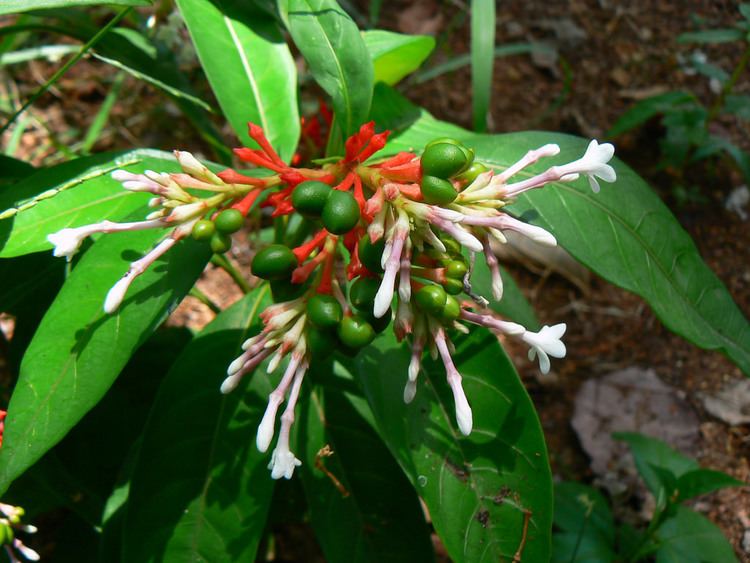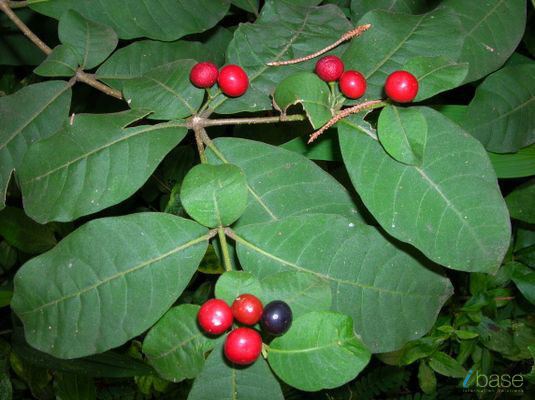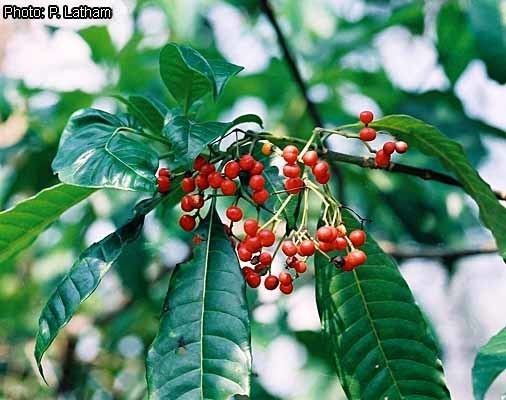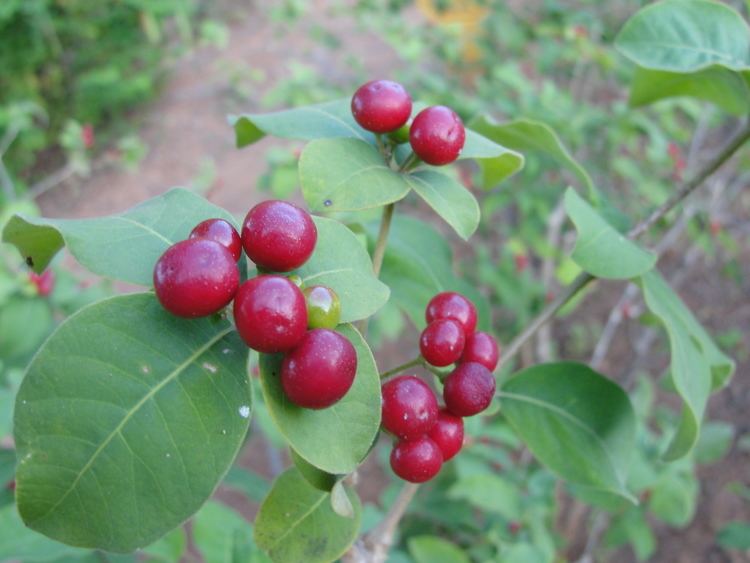Scientific name Rauvolfia Rank Genus | Tribe Vinceae | |
 | ||
Similar Apocynaceae, Rauvolfia vomitoria, Rauvolfia verticillata, Rauvolfia tetraphylla, Strophanthus | ||
Ayurvedic medicinal plant rauvolfia serpentina sarpagandha indian snakeroot
Rauvolfia (sometimes spelled Rauwolfia) is a genus of evergreen trees and shrubs in the dogbane family, Apocynaceae. The genus is named to honor Leonhard Rauwolf. The genus can mainly be found in tropical regions of Africa, Asia, Latin America, and various oceanic islands.
Contents
- Ayurvedic medicinal plant rauvolfia serpentina sarpagandha indian snakeroot
- Ayurvedic use rauvolfia root sarpgandha
- Spelling
- Chemical constituents
- Medicinal uses
- Precautions
- Conservation
- Species
- References

Ayurvedic use rauvolfia root sarpgandha
Spelling

The International Code of Nomenclature for algae, fungi, and plants stipulates that the genus name was established by Carl Linnaeus in his 1753 book Species Plantarum, which cites his earlier description which states in Botanical Latin that the name is dedicated "to Leonhard Rauwolf": "Leon. Rauvolfio". Although some subsequent authors hypercorrected the Classical Latin letter "v" to a modern "w", this is not accepted by the code of nomenclature.
Chemical constituents
Rauvolfia serpentina, commonly known as or Indian Snakeroot or Sarpagandha, contains many indole alkaloids.
Medicinal uses

Reserpine is an alkaloid first isolated from R. serpentina and was widely used as an antihypertensive drug. It had drastic psychological side effects and has been replaced as a first-line antihypertensive drug by other compounds that lack such adverse effects, although combination drugs that include it are still available in some countries as second-line antihypertensive drugs.

Other plants of this genus are also used medicinally, both in conventional western medicine and in Ayurveda, Unani, and folk medicine.
Precautions
Women who are pregnant, may be pregnant, or plan pregnancy in the near future should not ingest Rauvolfia plants or preparations made from them. They may also be harmful for people with any chronic disease of the gastrointestinal tract, such as stomach or duodenal ulcers, gastroesophageal reflux disease (reflux esophagitis), ulcerative colitis, irritable bowel syndrome, and diverticulosis. No "safe" dosage has been established.
Conservation
Rauvolfia serpentina is declining in the wild due to collection for its medicinal uses. Consequently, it is listed in CITES Appendix II. Rauvolfia vomitoria is a highly invasive species in Hawaiʻi, and is capable of establishing dense monotypic stands.
Species
Species include:
- Rauvolfia celastrifolia Baker = Stephanostegia hildebrandtii Baill.
- Rauvolfia dentata Tafalla ex D.Don = Citharexylum dentatum D.Don
- Rauvolfia flexuosa Ruiz & Pav. = Citharexylum flexuosum (Ruiz & Pav.) D.Don
- Rauvolfia glabra Cav. = Vallesia glabra (Cav.) Link
- Rauvolfia laevigata Willd. ex Roem. & Schult. = Tabernaemontana amygdalifolia Jacq.
- Rauvolfia longifolia A.DC. = Alstonia longifolia (A.DC.) Pichon
- Rauvolfia macrophylla Ruiz & Pav. 1799 not Stapf 1894 = Citharexylum flexuosum (Ruiz & Pav.) D.Don
- Rauvolfia oppositifolia Spreng. 1822 not Sessé & Moc. 1888 = Tabernaemontana oppositifolia (Spreng.) Urb.
- Rauvolfia pubescens Willd. ex Roem. & Schult. = Citharexylum quitense Spreng.
- Rauvolfia spinosa Cav. = Citharexylum flexuosum (Ruiz & Pav.) D.Don
- Rauvolfia stenophylla Donn.Sm. = Alstonia longifolia (A.DC.) Pichon
- Rauvolfia strempelioides Griseb. = Strempeliopsis strempelioides (Griseb.) Benth. ex B.D.Jacks.
- Rauvolfia striata Poir. = Ochrosia borbonica J.F.Gmel.
